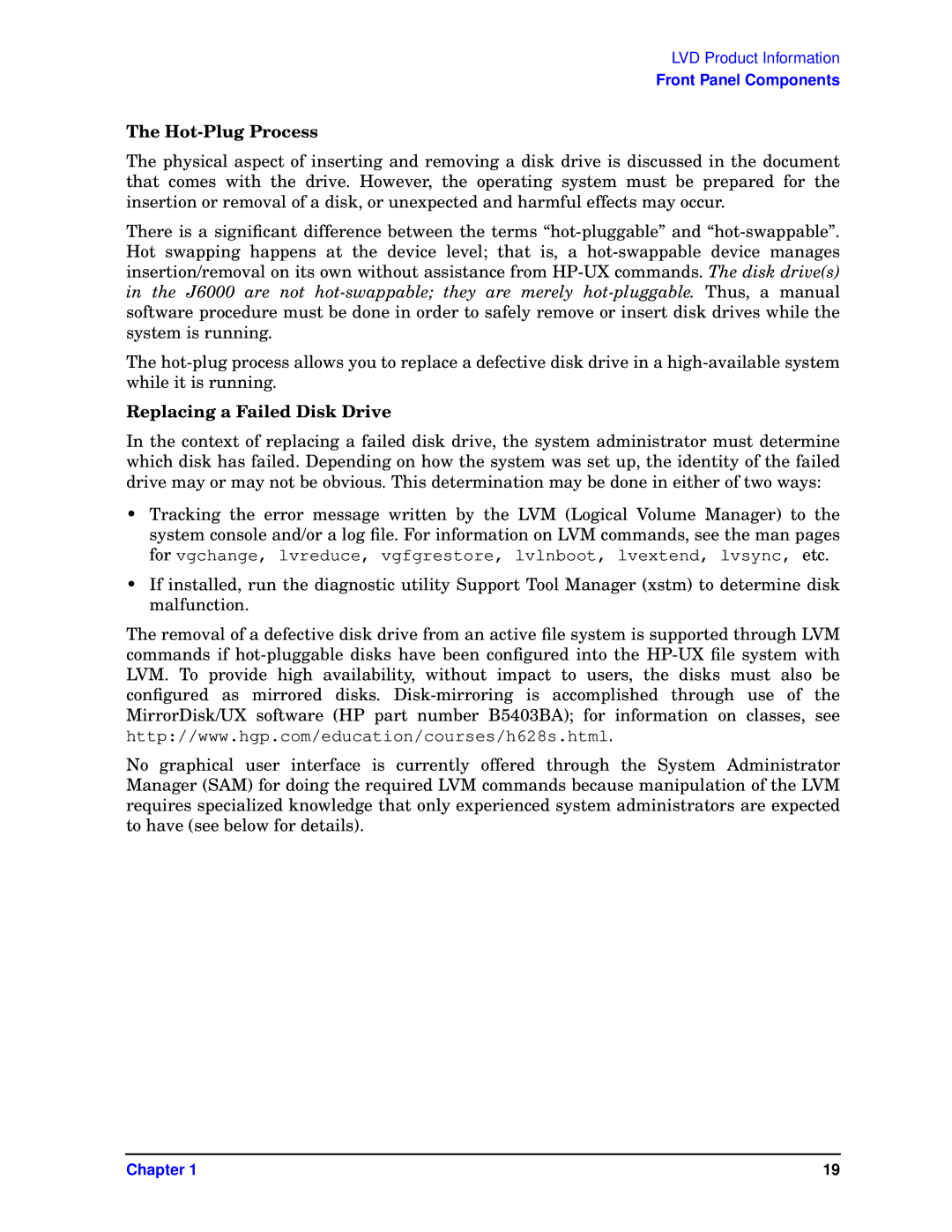LVD Product Information
Front Panel Components
The Hot-Plug Process
The physical aspect of inserting and removing a disk drive is discussed in the document that comes with the drive. However, the operating system must be prepared for the insertion or removal of a disk, or unexpected and harmful effects may occur.
There is a significant difference between the terms
The
Replacing a Failed Disk Drive
In the context of replacing a failed disk drive, the system administrator must determine which disk has failed. Depending on how the system was set up, the identity of the failed drive may or may not be obvious. This determination may be done in either of two ways:
• Tracking the error message written by the LVM (Logical Volume Manager) to the system console and/or a log file. For information on LVM commands, see the man pages for vgchange, lvreduce, vgfgrestore, lvlnboot, lvextend, lvsync, etc.
•If installed, run the diagnostic utility Support Tool Manager (xstm) to determine disk malfunction.
The removal of a defective disk drive from an active file system is supported through LVM commands if
http://www.hgp.com/education/courses/h628s.html.
No graphical user interface is currently offered through the System Administrator Manager (SAM) for doing the required LVM commands because manipulation of the LVM requires specialized knowledge that only experienced system administrators are expected to have (see below for details).
Chapter 1 | 19 |
